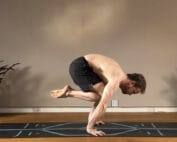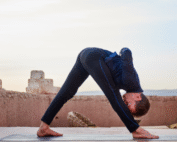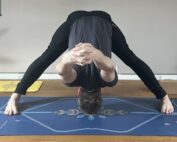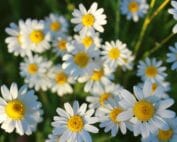
Deep Dive into the Salamba Sirsasana: A Yoga Guide to Mastery
Hi! I’m Dav Jones, a yoga teacher and teacher trainer devoted to helping students explore their physical potential and inner stillness through intelligent, embodied movement.
Today, we’re flipping the script—literally—with one of yoga’s most iconic inversions: Salamba Sirsasana (Supported Headstand).
But let’s be clear: this isn’t just about getting upside down. Sirsasana is a powerful integration of strength, structure, and nervous system clarity. Whether you’re a first-time inverter or refining your technique, this guide breaks down setup, structure, neuromechanical strategies, and common pitfalls—all through a kinesiologist’s lens.
What is Salamba Sirsasana?
Salamba Sirsasana means “Supported Headstand,” often called the “King of Asanas” due to its widespread systemic benefits. It’s an axial inversion in which the head contacts the ground passively, while load is primarily distributed through the forearms and shoulders to minimize cervical compression.
This inversion teaches the practitioner how to stack joints along gravity’s axis, engage the myofascial slings for stability, and regulate autonomic nervous system tone—all while remaining deeply focused and calm.
Benefits of Salamba Sirsasana
🔹Physical Benefits (Kinesiological Focus)
- Enhances Shoulder Stability
- Engages scapular stabilizers (serratus anterior, lower traps) to resist elevation and support neck unloading.
- Loads the Deep Core
- Requires transverse abdominis, pelvic floor, and diaphragmatic co-activation to maintain spinal neutrality.
- Trains Midline Integration
- Balances frontal and posterior chain recruitment, especially in the gluteals, hamstrings, and hip flexors, to maintain verticality.
- Improves Proprioception
- Inversions challenge your vestibular and somatosensory systems, improving balance and body awareness.
- Regulates Blood Flow
- Encourages venous return and cerebrospinal fluid movement, potentially improving neurovascular tone.
🔹 Mental & Neurological Benefits
- Rewires Spatial Awareness
- Inversion challenges the body’s righting reflexes and invites new neural patterning through the vestibular system.
- Develops Cortical Control
- Fine-tuned motor control of distal limbs (legs, feet) while inverted enhances corticospinal engagement and nervous system coordination.
- Builds Psychological Resilience
- Facing fear, instability, and effort upside down promotes nervous system resilience, discipline, and emotional regulation.
Step-by-Step: How to Do Salamba Sirsasana (With Movement Science Cues)

🔸 Prep Phase: Prerequisite Patterning
Warm up with pattern-specific mobility and strength work:
Warm up with:
- Dolphin Pose

* Emphasize scapular protraction and external rotation of the humerus—keys to load-bearing without collapsing into the neck.
2. Forearm Plank with Hollow Body Activation

* Train axial extension + posterior pelvic tilt—critical for preventing lumbar hyperextension.
3.Downward-Facing Dog (‘Shoulder Blade Shrugs’)

Depressed Shoulders
Start with shoulders depressed in Downdog.

Elevated Shoulders
Elevate shoulders and depress on repeat.
* Builds dynamic awareness of shoulder-to-core sequencing.
🔸 Execution: Progressive Setup
- Set the Base
- Kneel and interlace fingers. Forearms shoulder-width apart. Elbows stable—not splaying.
- Place the crown (not forehead or occiput) on the ground. Hands cradle the occiput lightly.
- Key cue: Elbows down, shoulders away from ears.
- Lift the Pelvis
- Tuck toes. Lift hips to enter a Dolphin-like inversion.
- Walk feet forward until hips begin to stack over shoulders. Do not force—wait for vertical readiness.
- Enter Tuck
- Bring one knee to chest, then the other. Compress thighs against ribs. This compresses the center of mass and increases control.
- Activate the deep front line (core slings, psoas, pelvic floor).
- Ascend with Control
- Slowly extend legs skyward while maintaining the neutral spine and scapular depression.
- Think: Hips lift, ribs hug in, feet float up.
- Hold the Shape
- Stack heels over knees, knees over hips, hips over shoulders.
- Shoulders remain active—not collapsing into cervical spine.
- Breath: Low, slow, diaphragmatic.
🔸 Exit Strategy
- Lower one leg, then the other, with eccentric control of the hip flexors and abdominals.
Rest in Child’s Pose to downregulate the nervous system.
Key Alignment & Kinesiological Focus
- Forearms = Primary Load-Bearing Surface
Avoid loading the neck—your traps, delts, and serratus create the supportive shelf. - Head is Contact Point, Not Pressure Point
Approximately 80–90% of your bodyweight should be in the arms—not the skull or cervical spine. - Avoid Banana Back
Engage deep core and glutes. Use pelvic tilt and spinal segmentation cues. - Relax the Superficial Face Muscles
Jaw tension is a sign of sympathetic drive. Invite parasympathetic presence through conscious softening.
Common Challenges and How to Solve Them
| Issue | Kinesiological Insight & Solution |
|---|---|
| Fear of Falling | Train vestibular tolerance. Start in Tuck. Use a wall, then gradually reduce support. |
| Neck Compression | Prioritize scapular strength and forearm press. Check for shoulder elevation and arm collapse. |
| Core Collapse | Add supine hollow holds, Boat Pose, and Leg Lifts. Cue posterior pelvic tilt and core wrap. |
| Shoulder Fatigue | Improve scapular upward rotation and trap/lower trap co-activation. Dolphin push-ups help. |
Modifications & Variations
🔸 Beginner-Friendly
- Wall Support: Safely refine vertical stacking without fear response.
- Tuck-Only Version: Keeps mass close to midline. Builds control.

- Tripod Prep: Trains balance with wider base, though more load transfers to neck—use with caution and strength foundation.

🔸 Advanced Progressions
- Leg Shapes: Add Eagle, Lotus, or Straddle legs to explore hip control and spinal integration.

Sirsasana – Lotus Variation

Sirsasana – Eagle Variation
- Press-Up from Pike: Emphasizes hip flexor strength + shoulder depression.
- Transitions: Move between Headstand, Forearm Stand, and Crow for dynamic balance practice.
Integration: Where Sirsasana Belongs in Practice
Use it as a peak pose, inversion lab, or as a final nervous system shift before rest:
- After: Shoulder-priming sequences, core drills, and spinal mobilizations.
- Before: Seated forward folds, hip openers, and grounding pranayama.
Pair it with:
- Pincha Mayurasana (for shoulder challenge)

- Bakasana (for dynamic core control and arm loading)

Final Thoughts
Salamba Sirsasana isn’t just about being upside down—it’s a study in structure, sensation, and self-trust. As you refine your relationship with gravity, you refine your relationship with effort, stillness, and fear.
This is embodied yoga science in action: biomechanics meets breath.
Move slowly. Stay curious. And when the moment comes, stay in the pose—let it teach you.
Want to Go Deeper?
I break down poses like this—and far more—on my Patreon Channel, where you’ll get:
- Exclusive tutorials
- Practice labs with cue breakdowns
Looking for personalised support?
Join my DJY Mentorship Program—a one-to-one 3-month commitment with me. A container where we evolve your practice through evidence-informed movement and yogic wisdom.
Let’s explore the journey upside down—together.









